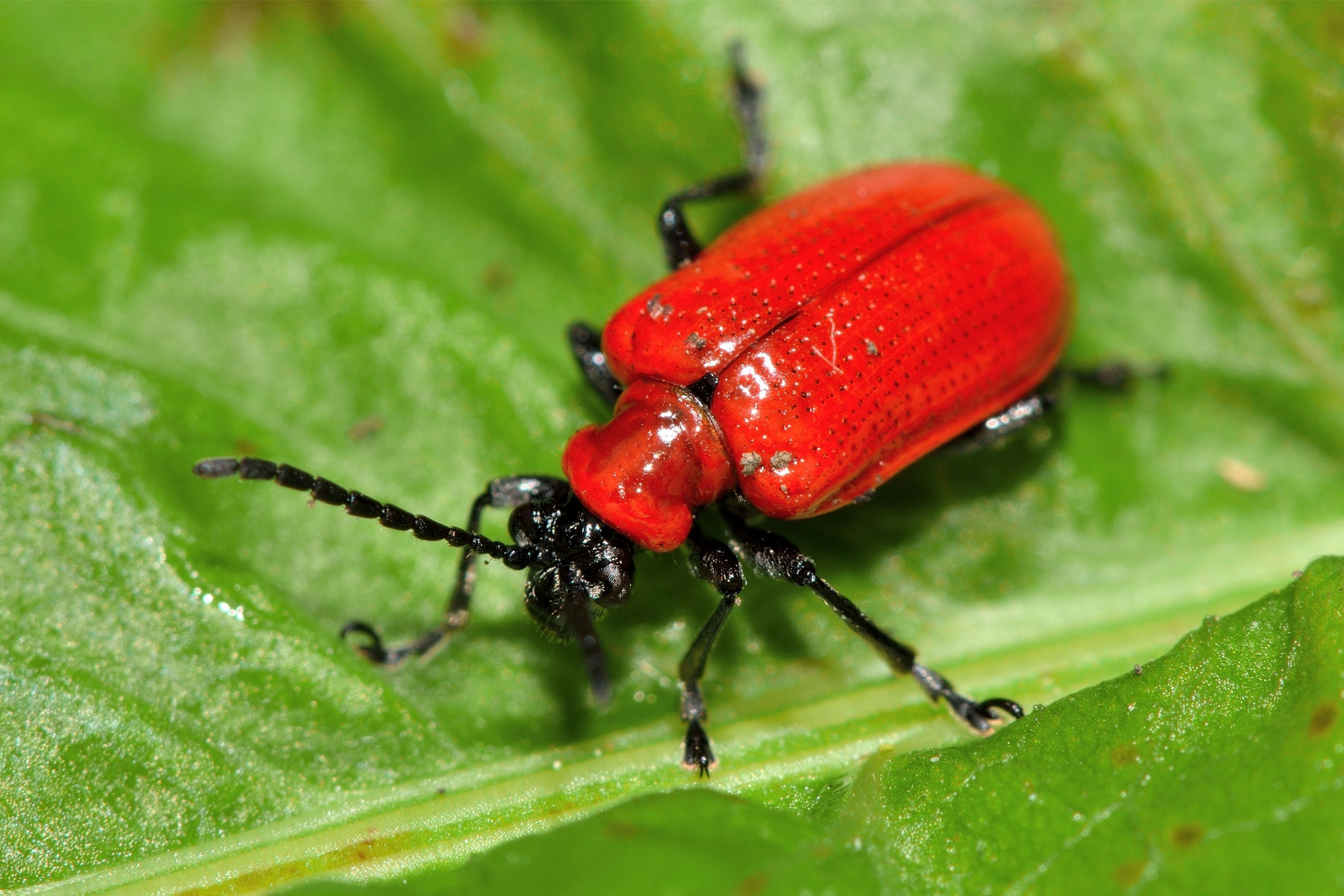Scarlet lily beetle
(Lilioceris lilii)

Description
The scarlet lily beetle, red lily beetle, or lily leaf beetle (Lilioceris lilii), is a leaf beetle that eats the leaves, stem, buds, and flowers, of lilies, fritillaries and other members of the family Liliaceae. It lays its eggs most often on Lilium and Fritillaria species. In the absence of Lilium and Fritillaria species, there are fewer eggs laid and the survival rate of eggs and larvae is reduced.It is now a pest in most temperate climates where lilies are cultivated. This lily beetle belongs to the order Coleoptera, and the family Chrysomelidae, the leaf beetles. The adult lily beetle is about 6 to 9 mm (¼–⅜ in) in length, with relatively long legs and antennae. Its elytra (harder forewings) are bright scarlet and shiny. Its underside, legs, eyes, antennae and head are all black. It has large eyes, a slim thorax, and a wide abdomen.Each antenna is made up of 11 segments. The eyes are notched and there are two grooves on the thorax. This lily beetle may be confused with the cardinal beetle (Pyrochroa serraticornis), which also has red elytra and a black underside. The wing cases of the lily leaf beetle are dimpled and are shinier and more rounded than those of the cardinal beetle, which are relatively dull, and narrower, flatter, and more elongated. The cardinal beetle also has comb-like antennae.The lily leaf beetle is herbivorous, while the cardinal beetle preys on insects. The lily leaf beetle is also confused with unspotted ladybirds, but it is narrower in shape. The lily leaf beetle is indigenous to parts of Europe and Asia. It is thought to have been introduced to North America through the importation of plant bulbs in 1943.First spotted in Montreal, it spread throughout Canada and appeared in Massachusetts in 1992, and by 2012 was in all six New England States, as well as New York and Washington states. In Canada it is found from the Maritime Provinces west to Manitoba.As of 2001, it spread as far west as Alberta, and as of 2017 full infestations reported as far north as the Edmonton, AB area. It has also become established as an invasive species in the United Kingdom since being first recorded in 1839, although the first colony did not become established until 1939 and it did not spread far until the 1980s, then more rapidly from the 1980s.Since then it has spread from Surrey in southern England as far north as Inverness, Scotland. It is also found in Ireland. It is also found in the Middle East and North Africa.
Taxonomic tree:







